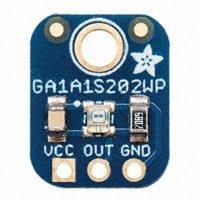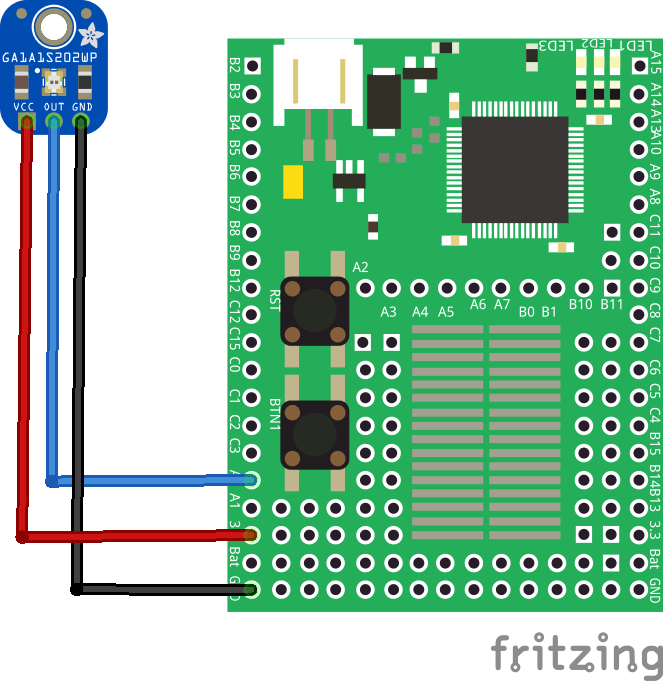In this example we will connect a GA1A12S202 Log-Scale Analog Light Sensor to an Espruino. Like a CdS photo-cell, the sensor does not require a microcontroller, the analog voltage output increases with the amount of light shining on the sensor face. This sensor has a lot of improvements that make it better for nearly any project.
The features of this sensor are as follows
Output voltage increases with light on the sensor
Logarithmic response not only gives more sensitivity in low light, its also almost impossible to “max-out” the sensor
Dynamic range of 3 to 55,000 Lux
Use indoors and outdoors without needing to recalibrate!
Again these are typically best used in breakout/module form. Here is a picture of the module
Illuminance Example
0.002 lux Moonless clear night sky
0.2 lux Design minimum for emergency lighting (AS2293).
0.27 – 1 lux Full moon on a clear night
3.4 lux Dark limit of civil twilight under a clear sky
50 lux Family living room
80 lux Hallway/toilet
100 lux Very dark overcast day
300 – 500 lux Sunrise or sunset on a clear day. Well-lit office area.
1,000 lux Overcast day; typical TV studio lighting
10,000 – 25,000 lux Full daylight (not direct sun)
32,000 – 130,000 lux Direct sunlight
Schematics
You connect the sensor as follows
Vcc – 3v3
Gnd – Gnd
Out – A0
Code
var rawValue = analogRead(A0);
var logLux = rawValue * 3.3;
var luxValue = Math.pow(logLux, 10);
console.log('Raw Value: ', rawValue);
console.log('Lux: ', luxValue);
Output
Raw Value: 0.38135347524
Lux: 9.96360456839
Raw Value: 0.70679789425
Lux: 4765.31779115492
Value: 0.78077363241
Lux: 12894.09251032220
Links


